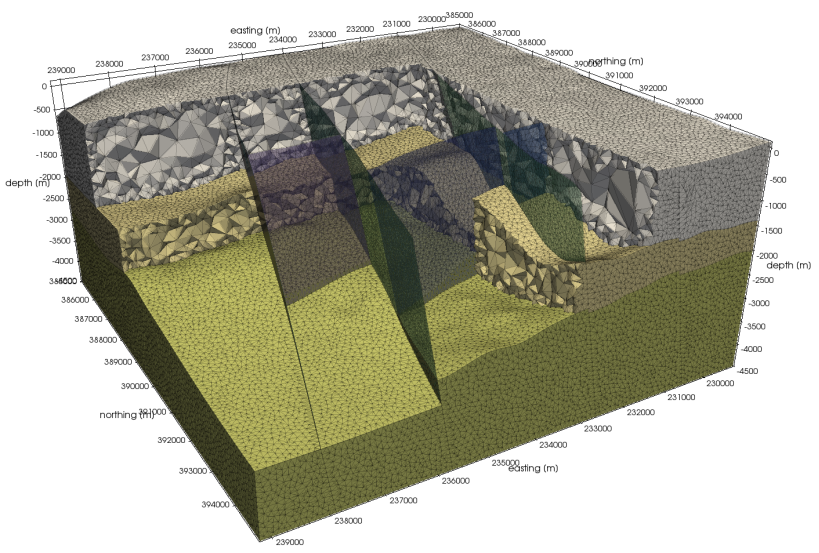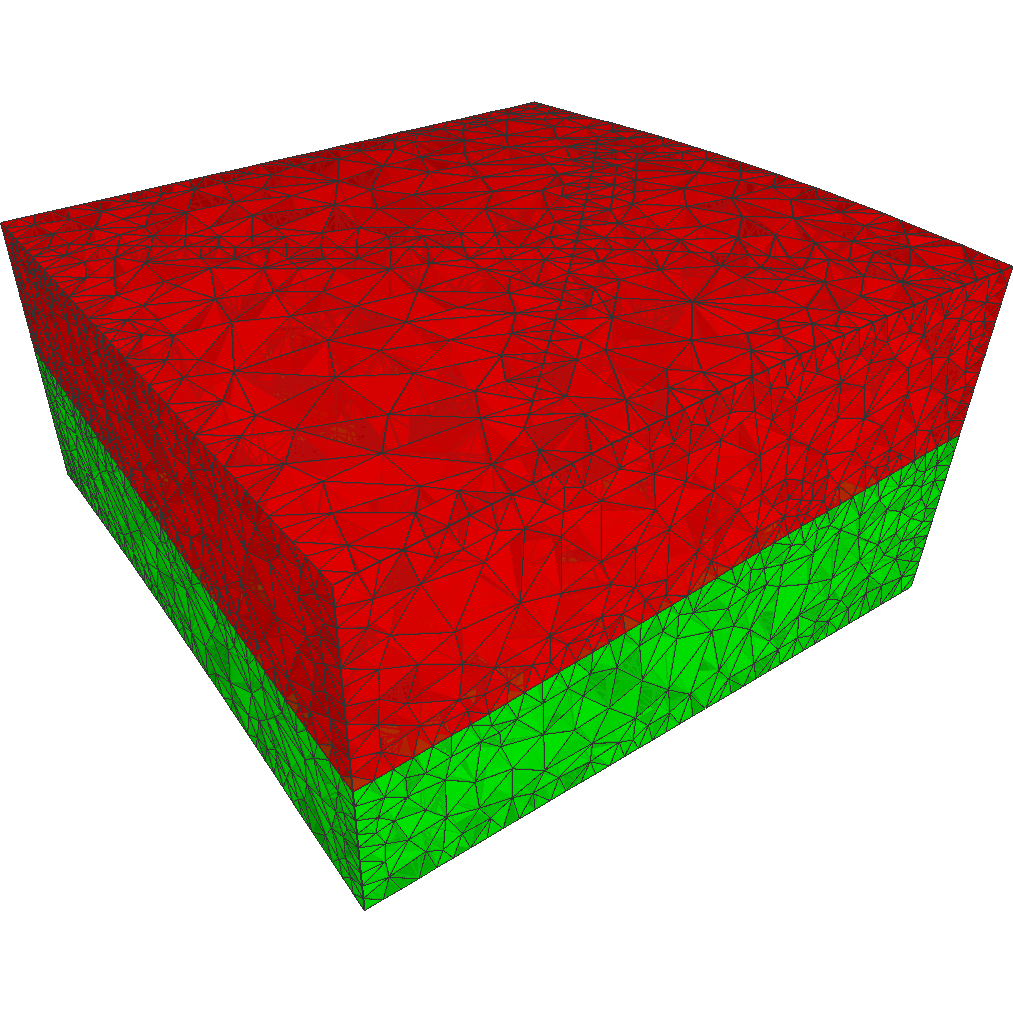GOLEM
GOLEM is a modelling platform for thermal-hydraulic-mechanical and non-reactive chemical processes in fractured and faulted porous media, based on the MOOSE framework
The tool MeshIT generates quality tetrahedral meshes based on structural geological information. It has been developed at the GFZ Potsdam and some extensions were later added by PERFACCT. All procedures are fully automatized and require at least scattered data points as input.
MeshIt is a software for generating high quality, boundary conforming Delaunay tetrahedral meshes for Finite Element (FE) or Finite Volume (FV) Thermo-Hydraulic-Mechanical-Chemical (THMC) dynamic simulations of complex faulted and fractured reservoir applications. The main goal of MeshIt is to provide an open source, time efficient, robust and “easy to handle” software tool to bridge the gap between geological and dynamic forward models of flow and transport processes in reservoir domains comprising fault zones, wells and induced and/or natural fractures.

Example of a complex structured reservoir from the Pohang reservoir site in South Korea.
MeshIt comes with an integrated graphical user interface (GUI) that facilitates the user during the different stages of the meshing workflows. All instructions from the user are provided either via the GUI or in text files, which can be input to the software. Beside third party C libraries, the complete code has been written in the object oriented C++ programming language. In order to provide cross-platform support (Windows, Mac OS X and Unix operating systems under 32 and 64 bit) the open source project Qt has been integrated in the supported library environment. The interactive 3D graphics Application Programming Interface (API) has been developed by relying on the OpenGL library. All graphical processing stages have been interfaced to the open-source, multiplatform visualization software Paraview, the latter being based on the Visualization ToolKit (VTK). MeshIt consists of different geometric and meshing routines, which have been combined in an automated software framework. The core meshing libraries are TetGen, a quality tetrahedral mesh generator developed at the WIAS Institute in Berlin and Triangle, a two-dimensional quality mesh generator. Both libraries are Delaunay-based. A nice feature of methods based on the Delaunay property is that they guarantee high-quality meshes showing at the same time a large flexibility when applied to generic geometries comprising internal boundaries. Therefore, Delaunay-based meshes are particularly suitable for the numerical solution of partial differential equations on highly irregular domains. With the single exception of the final constrained Delaunay tetrahedralization, all routines have been written for parallel computation on symmetric multiprocessing computer (SMP) architecture, as based on the Qt thread support environment via platform independent threading classes. More information can be found in Cacace and Blöcher (2015).
MeshIt is available from the GitHub repository, linked to the DOI: 10.5281/zenodo.4327281.
If you use MeshIt for your work please cite:

GOLEM is a modelling platform for thermal-hydraulic-mechanical and non-reactive chemical processes in fractured and faulted porous media, based on the MOOSE framework
LYNX (Lithosphere dYnamics Numerical toolboX) is a novel numerical simulator for modelling thermo-poromechanical coupled processes driving the deformation dynamics of the lithosphere.